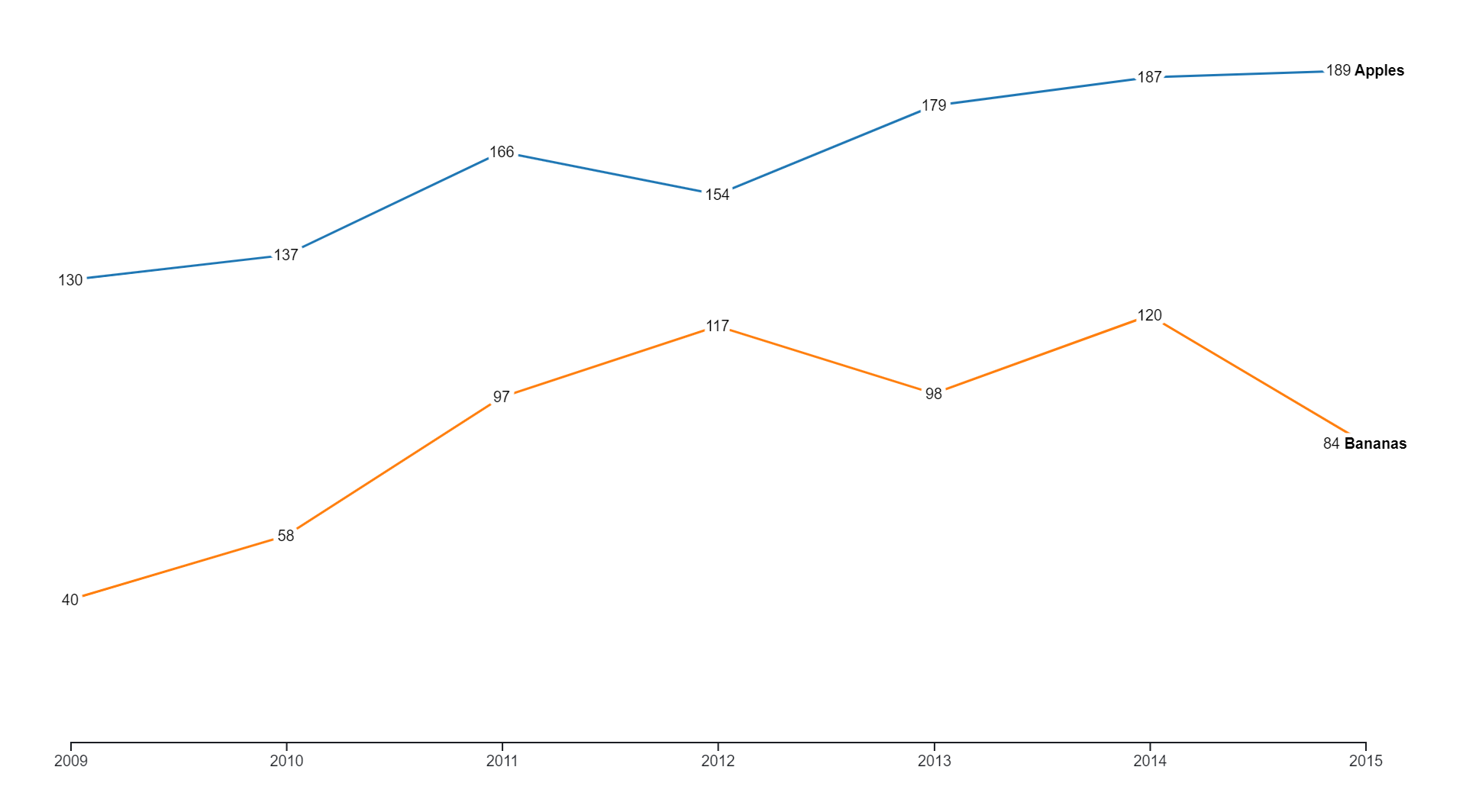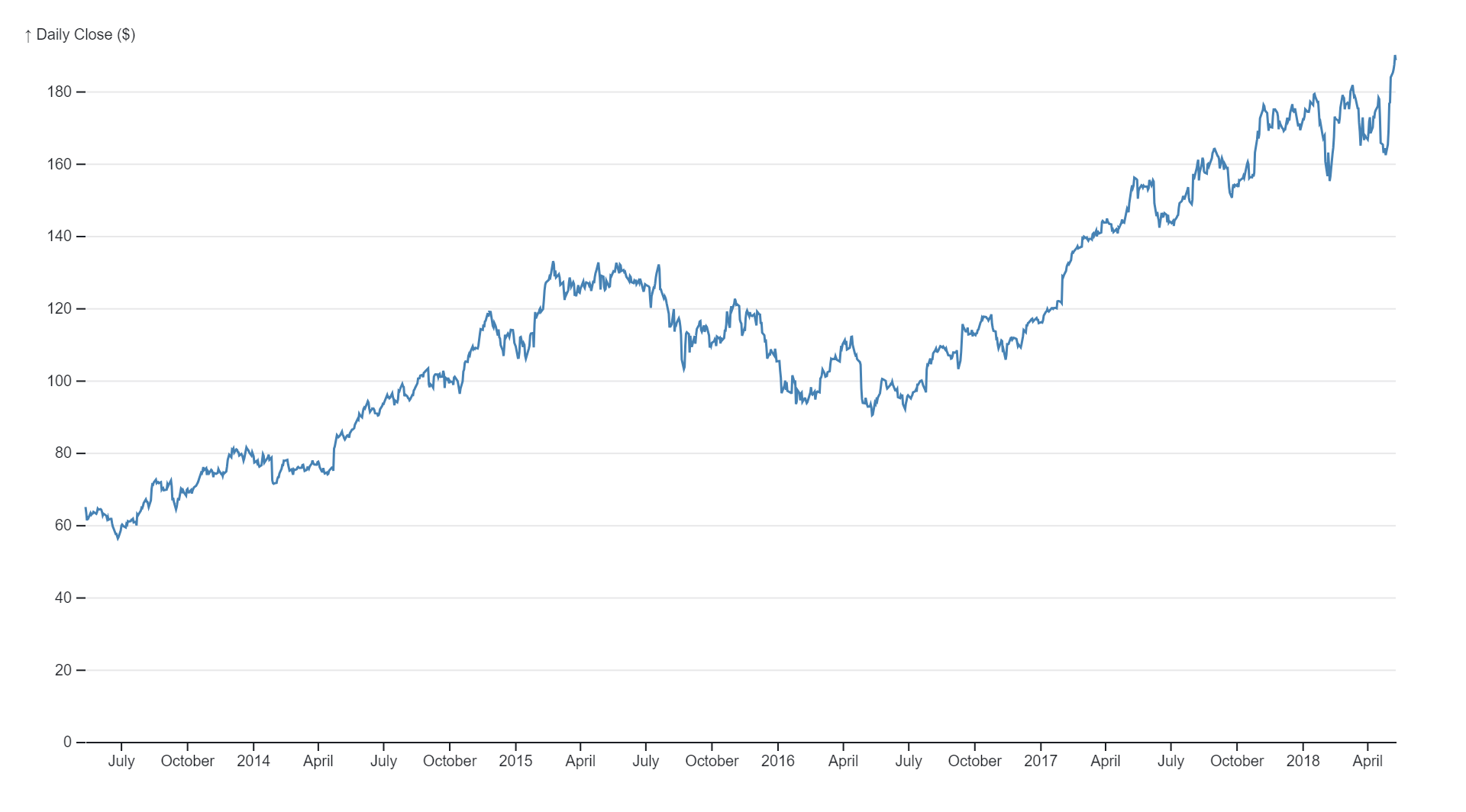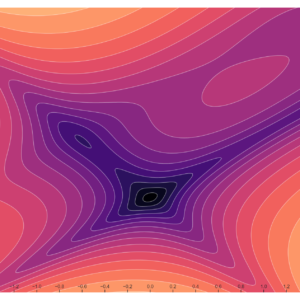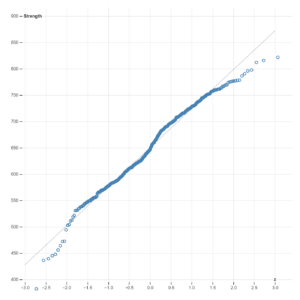Description
Directly labeling lines in data visualization refers to the practice of placing labels directly on the lines themselves, rather than relying on a separate legend or annotations. This approach enhances the clarity and interpretability of the chart by providing immediate context for each line. By placing labels directly on the lines, viewers can easily associate each line with its corresponding data series or category, facilitating quick interpretation of the chart’s information. Directly labeled lines are particularly useful in charts with multiple lines or complex data sets, where it may be challenging for viewers to differentiate between lines based on color alone. Moreover, this labeling technique eliminates the need for viewers to constantly refer back and forth between the chart and a legend, reducing cognitive load and making the chart more accessible. Directly labeling lines not only improves the readability and efficiency of data interpretation but also enhances the overall presentation of the chart, making it more visually appealing and engaging for viewers. Additionally, it fosters accuracy in data analysis by ensuring that viewers can accurately interpret the trends and patterns represented by each line. Overall, directly labeling lines is a valuable strategy for enhancing the effectiveness and impact of data visualization.
Uses:
- Identifying Trends: Directly labeling lines helps viewers quickly identify and interpret trends represented by the lines.
- Comparing Multiple Lines: Labels on lines aid in comparing multiple lines within a chart, making it easier to discern differences between them.
- Highlighting Key Data Points: Labels on lines can be used to highlight specific data points or key events along the line.
- Interpreting Changes: Directly labeling lines assists viewers in interpreting changes or shifts in data patterns over time or across categories.
- Navigating Complex Charts: In complex charts with multiple lines, direct labeling helps viewers navigate and understand the information more easily.
- Enhancing Readability: Labels on lines improve the readability of the chart by providing clear identification of each line’s meaning.
- Facilitating Analysis: Directly labeled lines facilitate analysis by providing immediate context for each line without the need for a separate legend.
- Supporting Decision Making: Clear labeling of lines supports decision making by providing actionable insights and guidance based on the data.
- Increasing Engagement: Directly labeled lines increase viewer engagement by presenting data in a visually appealing and understandable format.
- Communicating Information: Labels on lines effectively communicate information to viewers, conveying important data points and trends.
Purposes:
- Clarity: The primary purpose of directly labeling lines is to enhance the clarity and understanding of the data presented in the chart.
- Conciseness: Direct labeling lines ensures concise communication of information, avoiding the need for additional legends or annotations.
- Accessibility: Directly labeled lines improve accessibility for viewers, particularly those with visual impairments, by providing direct textual information.
- Accuracy: Labels on lines ensure accurate interpretation of data points and trends, reducing the risk of misinterpretation.
- Efficiency: Directly labeling lines increases the efficiency of data interpretation, allowing viewers to quickly grasp the meaning of each line.
- Facilitation of Analysis: Directly labeled lines facilitate analysis by providing clear identification of data points and trends, aiding in data-driven decision making.
- Enhanced Presentation: Labels on lines enhance the presentation of charts, making them more visually appealing and engaging for viewers.
- Minimization of Ambiguity: Directly labeling lines minimizes ambiguity in the chart, ensuring that viewers can easily associate each line with its corresponding data.
- Comparison: Directly labeled lines support comparison between different lines within the chart, enabling viewers to assess differences and similarities more effectively.
- Feedback: Directly labeled lines provide immediate feedback to viewers, guiding their interpretation of the data and facilitating further exploration or analysis.
Only logged in customers who have purchased this product may leave a review.








Reviews
There are no reviews yet.